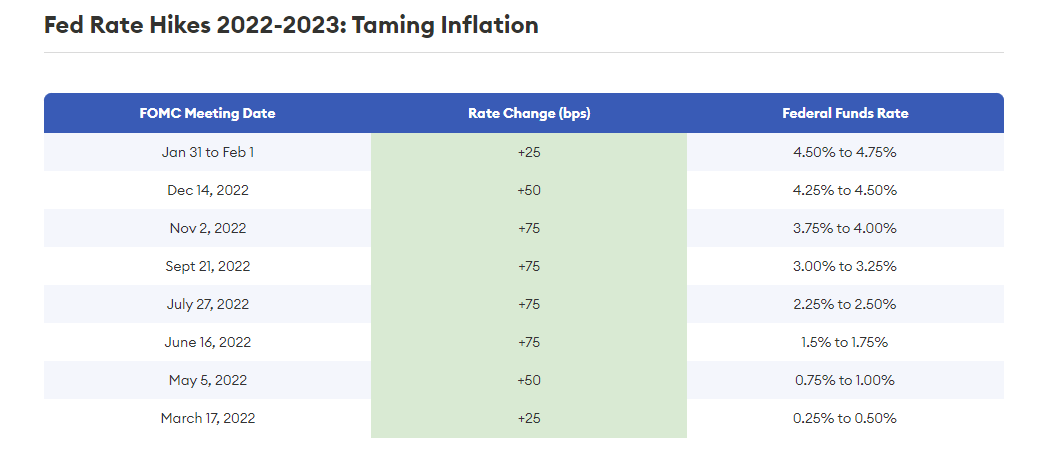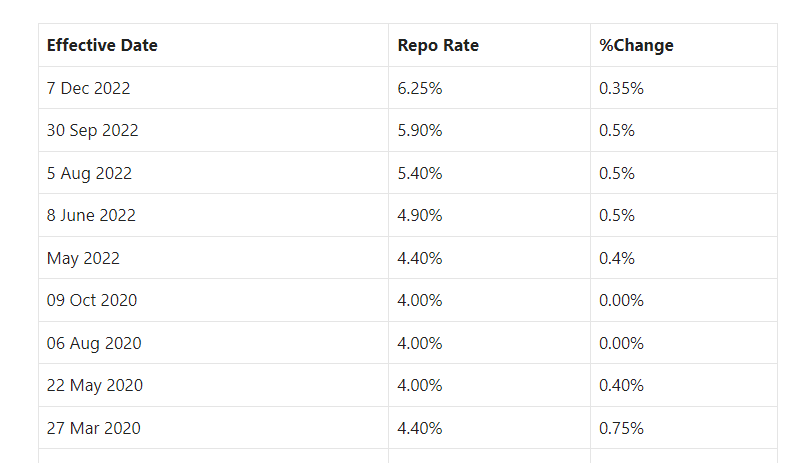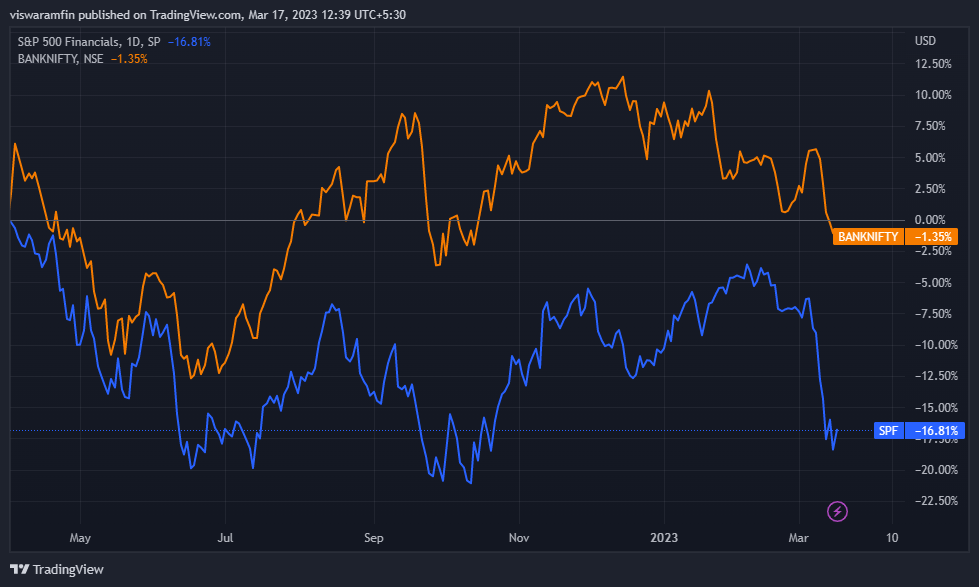Fully agree with your comments. This has nothing to do with Hindenburg or any other short seller. It is not that Hinderburg was the Federal Reserve who went after Adani while forgetting to keep clean their own backyard.
The facts we know of SVB are
- They used to fund the startups and hence obviously, startup would keep their account with them.
- Their deposits grew from approx 60 billion to 220 billion as most of the startups would keep their cash with them. This is obvious.
- What would the bank do with all this deposits. Their main line of business was to finance start ups. At that time, interest rate was near zero.
- The bank decided to invest their surplus cash by buying mostly federal agency mortgage-backed securities. These carry minimal credit risk but can have sizable interest-rate risk. This was at that time the sound thing to do to invest in these securities. All of them being long term.
- The investment were in longer-term mortgage securities with more than 10 years to maturity, rather than shorter-maturity Treasuries or mortgage issues maturing in less than five years. This led to an asset/liability mismatch.
- Fed started hiking interest rate which resulted in borrowing costs higher, meaning tech startups had to channel more cash towards repaying debt. At the same time, they were struggling to raise new venture capital funding. This resulted in a startup drawing up on the deposits at the initial stage.
- In order to meet the increased cash demand by companies, they were forced to sell the long dated securities at a discount. This resulted in a loss of 1.8billion.
- When this news came out, everyone panicked and wanted to take their deposits out. This is the typical run on the bank and there was nothing SVB could do but to shut shop. This is exactly what we saw when Adani stocks were falling and lower circuit being hit, there was no way to exit. I have personally experienced the same when Yes Bank was placed under moratorium by RBI. At that time, for the first time, I saw when there was only sell orders and not a single buy order.
When there is a run on any bank in this world, however strong they are, they will have to shut down as no Bank will have so much liquidity to meet all of their customers need. This is the biggest risk a bank as a business takes on. When there was so much news on SVB, a small time SVC Co -Op bank in India which had nothing to do with SVB, had people coming and asking for their deposits back. The Co-Op bank had to put a notice that they had nothing to do with SVB. This is how sensitive banking business is.
This is what happened in SVB. My only quarrel is what was the Federal Reserve doing, when they were selling these bonds, what happened to Fed monitoring these banks. SVB could have approached the Fed and asked for a loan or any such thing instead of selling these bonds and incurring a actual loss. Fed could have allowed them a bridge finance or something. This is something I never understood as to why they did not go to the Fed first.
In India, thanks to RBI monitoring, all banks are constantly monitored. Co-op Bank was out of their scope few years back and now they are under their monitoring mechanism as well. So many bad news were reported but RBI used to come out and quell these bad rumors.
The good news is that the depositors will get their money back. To the best of what I have read there has not been any fraud or investment going bad and hence whosoever buys this bank will be in a better position, I guess.
Although the depositors money were saved, which is their right, the impact will be felt by individuals as 53% of SVB is owned by Mutual Funds and 1.61% individual stakeholders. The remaining are held by FI - (truly do not care much on this category). Among the MFs - Vanguard owns 10% and Blackrock owns 5.18, there are others but the names are not familiar to me. As majority of the retail public invest in funds in USA, there could be a indirect affect on them.
Disclaimer: These are from what I have read in various publications and I could be absolutely wrong.
3 Likes
Fed has announced this facility now.
2 Likes
Are your deposits really insured?
“There is more than $22 Trillion in the U.S. banking system. The FDIC has $124.5 Billion on its balance sheet and a $100 Billion line of credit from the U.S. Treasury. FDIC assets cover only 1.26% of deposits. About the size of Silicon Valley Bank. One bank. Let that sink in”
FDIC - It is similar to the one we have in India - DICGC. The respective bank should be insured by FDIC and automatically all depositors are covered. This is what FDIC FAQ states.
Quote
Q: How can I get deposit insurance?
A: Depositors do not need to apply for or purchase FDIC deposit insurance. Coverage is automatic whenever a deposit account is opened at an FDIC-insured bank. If you want your funds insured by the FDIC, simply place your funds in a deposit account at an FDIC-insured bank and make sure that your deposit does not exceed the insurance limit for that ownership category. See “Are My Accounts Insured by the FDIC?” for more information about the types of insurable products that are covered by FDIC insurance and the amount of deposit insurance coverage that may be available under FDIC’s different ownership rights and capacities. each.
Unquote.
In India, if a bank is covered by DICGC, then all customers automatically gets the standard cover of 5 lacks
You didn’t get the point here.
Their total assets are only 122 + 100 Billion.
They have to cover 22 Trillion in deposits!
They only have funds to cover 1.26% of the deposits.
What happens when, let’s say, 5% of the deposits need to be covered???
Were the banks in US forced to buy bonds with low yields?
What is the situation here, is RBI forcing the public sector banks to bid for weekly bonds??
Why should FDIC balance sheet cover 22 trillion. If the entire banking system fails, Federal Reserve will come in and Government will have to re capitalise the bank. FDIC in any case covers upto max 250,000 per customer irrespective of the amount held. Most retail customer may have smaller amounts. Even in the case of SVB, there could be some arrangement where some one might buy out this bank and FDIC need not pay out.
No insurance company can have assets to cover their entire contingent exposure.
From what I read, SVB invested without thinking about asset liability mismatch and invested in these bonds. When they invested, the yields were great but subsequently due to constant increase in rates, this had its own repurcussion.
I think they do this is to mop up excess liquidity, but with public sector banks there is no liquidity issue as Government will always back them.
thats because the percentage of interest rate hike in India is no where close to US. They went from 0.25 to 4.75 ie 1900%

where as in India, we went from 4.4% to 6.25% ie 42%
i did not proof read the calculation, please point out if you see any errors
2 Likes
I am sure, India has seen in the past higher interest rate increases and despite this, there was never liquidity issues on any bank (to the best of my knowledge) as the Bank would always try to match as much as possible their asset vs liability. This SVB saga is like our small time NBFC who issues NCDs, these NCD has max 5 years duration while the money collected is lent for mortgage loans over 10 years. Now on maturity, if the NCD is not rolled over, the NBFC faces liquidity issue if depositors want their capital back. This is the classic asset liability mismatch which happens quite often with NBFC and small firms. Hence their survival depends on roll over of NCD or issue fresh NCDs. This is one of the reasons why NBfC want to become a bank, as they can then get depositors money into their account. NBFC cannot accept deposits.
If the same issue happens with a bank, RBI will immediately allow them line of credit so that they do not face liquidity issues. RBI used so many tools available to them during the pandemic so that liquidity was available in the banking space. This is what surprises me with SVB as to what was the Fed Reserve doing when they knew this bank was entering a crisis. On a daily basis, monthly basis, various statutory reports are given to Central Banks. Wonder what they were doing.
I remember RBI dictat during the corona period that Banks cannot declare dividends, they used to urge private banks to increase capital and majority of them followed suit. RBI had instructed banks to make additional 10% as provision for corona contingency. All these shows that RBI was on their feet all the time. I cant see any of such action by Fed Reserve. SVB was like a NBFC - not regulated or monitored - I think.
yeah indian banks are too big to fail. even if 42 crore sbi holders plan to take out their money via 17000 branches it may take a month or two.
interesting research is on the extent of collateral free loans provided during covid. it may take 3 years for it to create some impact
- The numbers quoted are not all the deposits in the banks in the US. They are “insured desposits” by FDIC.
- For 2023, the FDIC “Designated Reserve Ratio” is 2%.
- On their website itself, they say:
"Extraordinary growth in insured deposits during the first and second quarters of 2020 caused the reserve ratio to decline below the statutory minimum to 1.30 percent as of June 30, 2020. On September 15, 2020, the Board adopted a Restoration Plan to restore the DIF to at least 1.35 percent by September 30, 2028. On June 21, 2022, the Board adopted an Amended Restoration Plan incorporating an increase in assessment rates. The Amended Plan requires the FDIC to update its analysis and projections for the DIF balance and reserve ratio at least semiannually. "
- Now, they have to paid out for SVB (which has already been done).
Hence the comments on their reserves…
@neha1101 , I forgot to mention something in last post.
In India the weightage of financial institutions are close to 40% on Nifty50
Whereas in US the weightage is less than 12% in SPX
So there are 2 ways to look at this data
-
Its relatively easier to do business in India if you sector is financials, interventions by the govt. on reforms will least impact this sector. thats why the banks are bigger than the product & services sector
-
if there is a global meltdown in credit & lenders & if what follows are bank run then the impact in India will be something that cannot be modelled. A mere FII withdrawal from 6 major financial institutions will spread a shockwave (eventhough nothing has changed fundamentally here)
SPF vs banknifty both in USD
First citizens bank buys SVB for 500 million dollars. Aprox. 4200 crore. Great deal for them.


